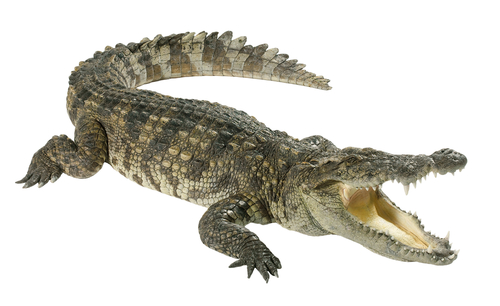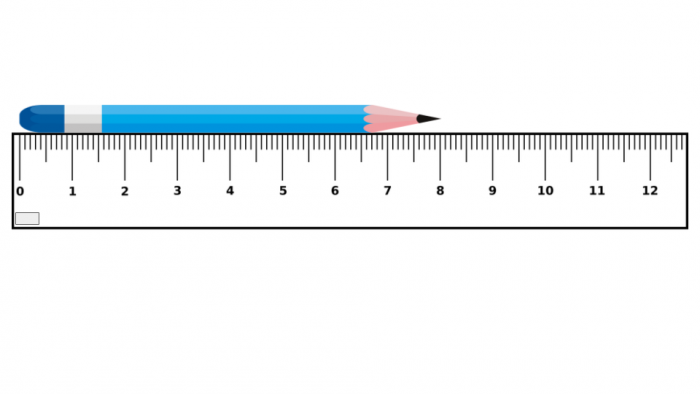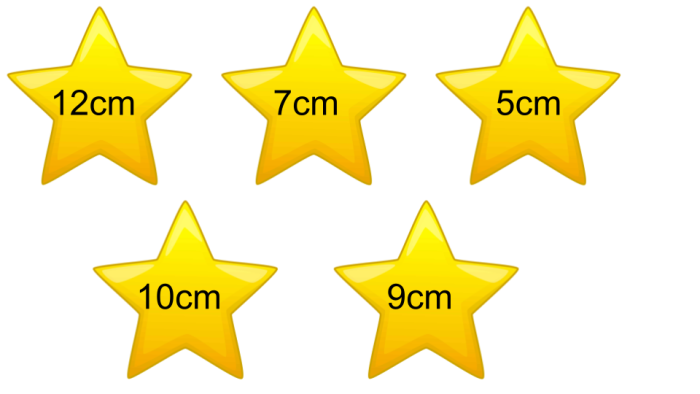In this activity, we will compare and order lengths with the use of signs >, < and =
> means greater than
< means smaller than
= means equal which means the same
Remember that the biggest number is always at the big opening. Think of this as being like a crocodile who is always hungry - his open mouth always gobbles up the bigger number.

Measuring Length
When we measure how long something is we use a ruler, measuring tape, or a meter stick.
Here is a ruler. A ruler measures things in centimetres and we write cm for short.
This ruler is measuring how long this pencil is. This pencil is 8 cm long:

We will be comparing lengths using these symbols and ordering lengths from smallest to largest.
We are going to be answering two types of questions.
Let's have a look at some examples.
Example 1
Fill in the missing symbol: >, < or =
12 cm .gif) 8 cm
8 cm
Answer
Which length is bigger?
12 cm
8 cm
Here, we can see that 12 cm is the bigger length and that's because 12 is a bigger number than 8.
So all we need to do is look for the bigger number and then choose the correct sign!
Remember, the crocodile eats the biggest number so it will eat the 12 cm like this:
8 cm  12 cm
12 cm
This reads 8 cm is smaller than 12 cm.
Example 2
Can you put these lengths in order from smallest to largest?

Answer
We need to order these from smallest to largest, so we need to start with the smallest number, which is 5 cm.
Then we can count up from 5 cm and see which number comes next. Each time we come across a number we can put it in the order.
Here, we are counting up from 5 cm and each number in bold is a number that is shown above on the stars:
5 cm, 6 cm, 7 cm, 8 cm, 9 cm, 10 cm, 11 cm, 12 cm
This means to order these numbers from smallest to largest it is:
5 cm, 7 cm, 9 cm, 10 cm, 12 cm
Are you ready to have a go at some questions now?








